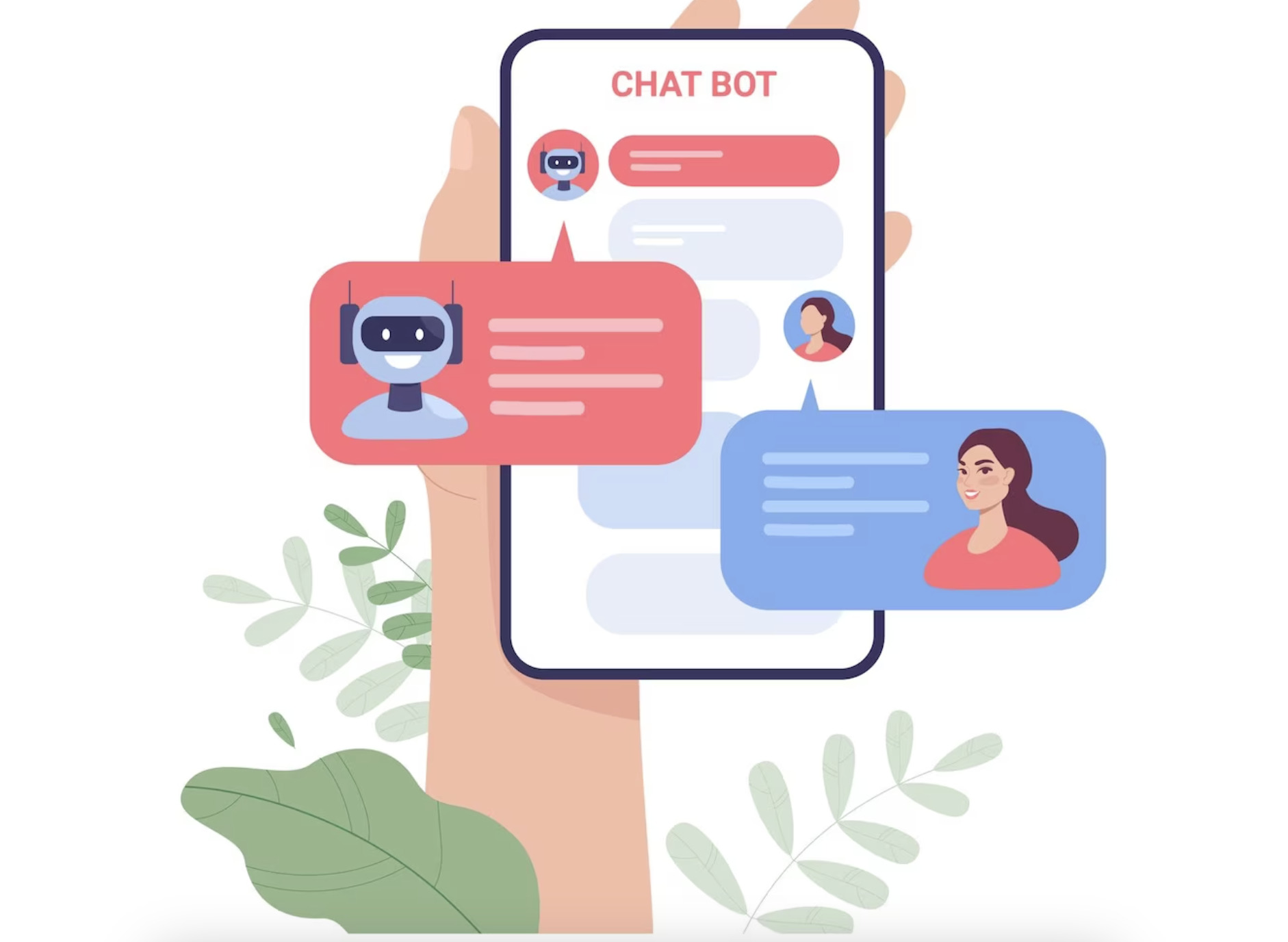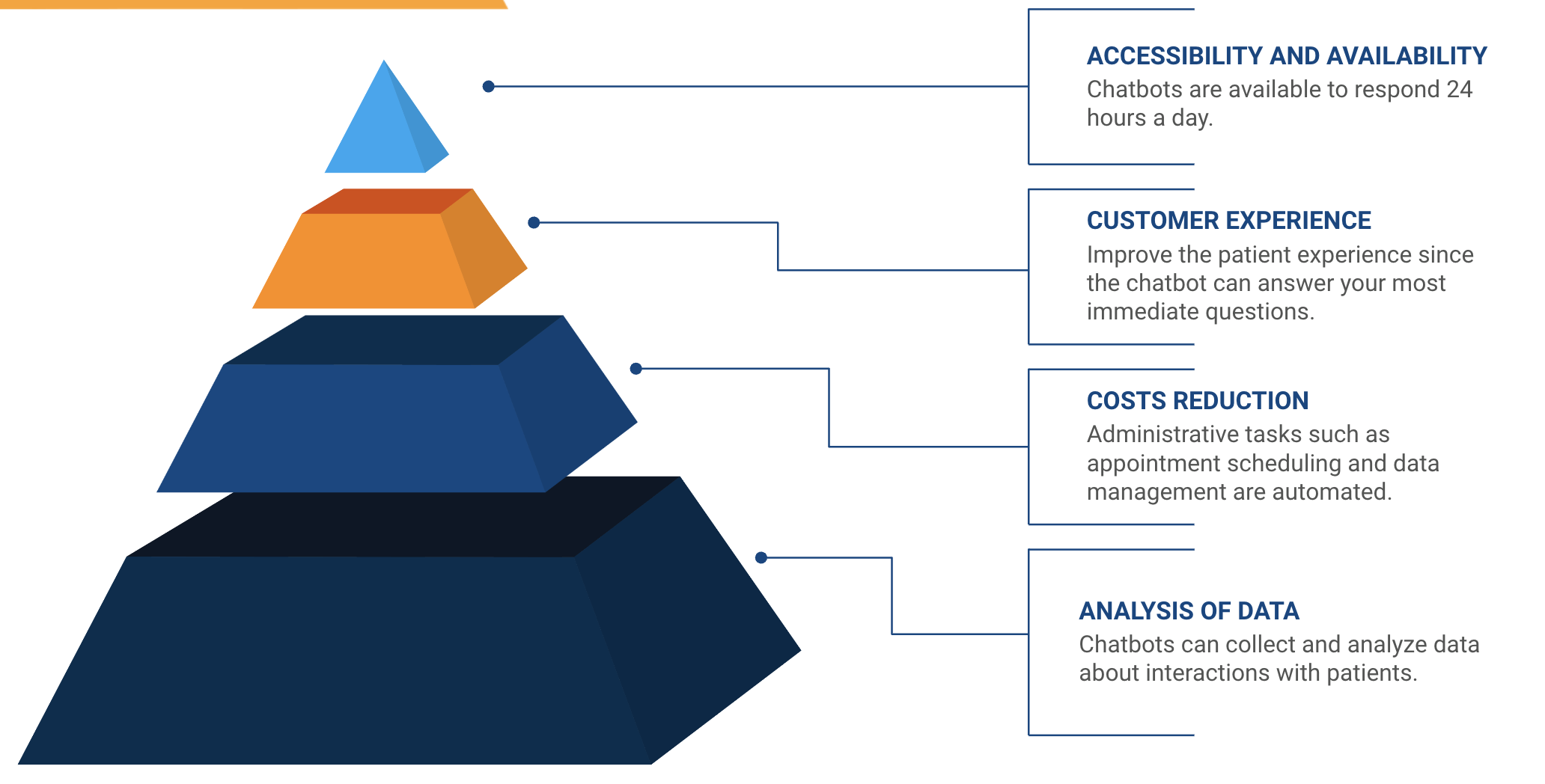
How chatbots are transforming the healthcare industry
September 01, 2023
Table of contents
Quick Access

Chatbots have been part of the transformation of the healthcare sector, since it has led to new ways in which patients can interact with health services and, in turn, how health personnel manage the flow of information with them.
Programmed to understand and answer patient questions, chatbots provide a host of benefits ranging from 24-hour accessibility to cost reduction and healthcare personalization. In this article, we will explore in detail how chatbots are transforming the healthcare industry, looking at their key advantages and best practices for their effective implementation.
Benefits of chatbots in the health area
The importance of technology in healthcare is undeniable and is constantly growing. As we move into the digital age, technology has become a fundamental pillar in improving the quality of healthcare in several key ways:
Better accessibility and availability
Imagine that you have any questions about a medical appointment, opening hours or the contact number of the doctor you need to contact. In many cases, health institutions do not have a 24-hour telephone line for you to call when you have any questions.
Chatbots can be available to answer questions and provide information 24/7, improving accessibility to healthcare, especially in emergencies or for people who work unconventional hours.
"Chatbots in healthcare may have the potential to provide patients with access to immediate medical information, recommend diagnoses at the first sign of illness, or connect patients with appropriate healthcare providers", they said in research published by the National United States Library of Medicine.
“Chatbots don't get tired, fatigued or sick, and they don't need to sleep; They are cost effective to operate and can operate 24 hours a day, which is especially useful for patients who may have medical concerns outside of their doctor's office hours. Chatbots can also communicate in several different languages to better suit the needs of each patient”, they added.
Improve the patient experience
Immediacy is very important for patients and, in certain cases, it can be decisive when clarifying any doubts. Chatbots can provide instant answers to common patient questions, reducing wait and frustration. Additionally, their ability to access up-to-date and accurate information ensures that patients receive reliable information.
“Chatbots can handle initial contact with patients, asking and answering the routine questions that inevitably arise. During the coronavirus disease 2019 (COVID-19) pandemic, especially, screening for this infection by asking certain questions in a predefined order and thus assessing the risk of COVID-19 could save thousands of manual examinations”, they stated in an article in News Medical magazine.

Costs reduction
Operational costs can be reduced through the implementation of chatbots, as they automate administrative tasks such as appointment scheduling and record management. This frees up time for medical staff to focus on direct patient care.
Chronic Health Management
Chatbots can keep track of patients with chronic diseases, collecting data about their health status and providing recommendations based on that information.
Data analysis capacity
Chatbots can collect and analyze data about patient interactions, which can help healthcare organizations identify trends, improve processes, and further personalize care.
“Time plays a crucial role in health care. Every second is precious. During an emergency, the delayed time may cause something unfavorable. Healthcare chatbots can save time because doctors receive medical histories, allergies, and any other medical details about that patient in an instant”, they added in an article published by Ligs University.
Best practices in the implementation of chatbots in health institutions
The successful implementation of chatbots in the healthcare sector requires consideration of various best practices to ensure that the technology is beneficial to both patients and healthcare professionals.
Here are some key best practices:
- Define clear objectives:
Before implementing a chatbot, it is essential to clearly define the objectives that you want to achieve. Is it about improving patient care, reducing operating costs, or providing administrative support? Setting specific goals will help guide implementation.
“Chatbots can speed up these processes by giving employees instant access to internal tools and applications. Instead of searching through a customer relationship management (CRM) system or human resources information system (HRIS) or contacting the human resources department, a chatbot, for example, can provide instant answers to these types of questions. questions”, they explained about it in a Forbes article.
- Selection of the appropriate platform:
Choosing the right chatbot platform is essential. It must be able to integrate with the existing systems of the health organization and offer the necessary functionalities, such as response personalization and data management in a secure way.

- Training and collaboration:
Training medical and administrative staff in the effective use of the chatbot is essential. It is also important to encourage collaboration between chatbots and human staff to ensure comprehensive and coordinated healthcare.
- Ethical and data privacy considerations:
Making sure that the chatbot complies with data privacy and health protection regulations is critical. Chatbots must protect sensitive medical information and comply with regulations such as HIPAA in the United States.
- Friendly interface design:
The chatbot interface should be intuitive and easy to use for patients of all ages and levels of technological skill. Communication must be clear and understandable.
- Feedback and continuous improvement:
Establish a feedback system with users to collect feedback on the effectiveness of the chatbot. Use this feedback to make continuous improvements to your chatbot's performance and accuracy.
The successful implementation of chatbots in the healthcare sector requires a strategic approach and consideration of these best practices to ensure that the technology benefits both patients and healthcare professionals, without compromising safety or quality of medical care.
Do you need to implement a chatbot? At Rootstack, we have +12 years of experience supporting companies in their digital transformation. Contact us!
We recommend you this video
Related Blogs
-6.45.03-p.m.png)
Migrating to Oracle Cloud: Strategies and Considerations
-9.01.17-a.m.png)
Nearshore development helps midsize companies grow
-9.01.17-a.m.png)
Methodologies used by IT staff augmentation companies
-9.01.17-a.m.png)
Hire a software development team in Colombia
-2.10.50-p.m.png)
What you gain by hiring a software provider in Panama
-3.57.25-p.m.png)
